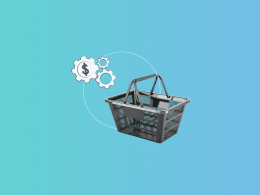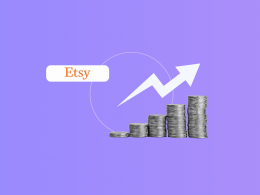Sales tax calculations can be challenging, even for experienced e-commerce business owners. If you’re just starting out and don’t already have a Shopify bookkeeping app, dealing with sales tax might seem impossible.
But don’t worry–we’re here to help. In this article, we’ll cover everything you need to know about Shopify tax reporting, and we’ll discuss what sales tax is and how to generate a sales tax report for your Shopify store.
What Is Sales Tax?
Sales tax is a consumption tax that businesses must collect from customers and remit to the state. The amount of sales tax charged depends on the state where you have a physical and economic presence and also depends on where your customers are located.
In the United States, there are two types of sales taxes:
- State sales tax: A tax imposed by states on the sale of goods and services
- Local sales tax: A tax imposed by localities, such as counties and cities, on the sale of goods and services
In most states, businesses must collect both state and local sales taxes from customers and remit them to the state. However, we’ll focus on state sales tax in this article because that’s what you’re most likely required to pay.
When to Collect Sales Tax on Shopify
While an LLC is not required to sell on Shopify, collecting sales tax is required (from a legal point of view). Still, it’s important to understand that you’re not always required to collect sales tax on your Shopify store.
Before you can start collecting sales tax on Shopify, you’ll need a sales tax permit. This permit is granted to you only if you have economic nexus in a state. In simple terms, economic nexus means you’re making so much money in a state that it requires you to start paying sales tax.
So, when do you have an economic nexus in a state? Well, it depends on the state. Different states have different thresholds for economic nexus. For example, state A might have a threshold of $400,000 in revenue or 200 transactions, while state B might cap it at $200,000 in revenue or one hundred transactions. You’ll have to stay updated about the nexuses in states where you operate, as they tend to change.
Once you reach the economic nexus threshold for a state, you’re required to start collecting sales tax from your customers in that state and remit it to the relevant state tax authority. So, how can you find out whether you have an economic nexus in a state? Well, that’s where Shopify sales tax reporting comes in.
How to Generate a Sales Tax Report on Shopify
To generate a Shopify sales tax report, go to ‘Orders’ from your dashboard. Next, click on ‘Export’ on the top right corner, and click on ‘Orders by Date’ to choose a timeframe.
The timeframe you choose depends on the purpose of the report you’re creating. If you’re trying to determine whether you’ve reached the economic nexus for a state, choose one year as the timeframe. On the other hand, if you’re trying to determine how much sales tax you have to pay for a quarter, you might want to choose a quarter as the timeframe.
Once you’ve selected the timeframe, click on ‘Export Orders.’ Shopify will send a spreadsheet to your email address, which might take up to a few hours. Once you receive the email containing your tax report, you can download and open it as an Excel file. The file will contain information about all your orders in a given period of time, including order ID, the total amount that the customer paid (subtotal) for an order, the tax on the order (if you were already collecting it on Shopify), and the state.
If you’re trying to find the amount of sales tax you owe, you’ll have to calculate the sum of the sales tax column for a particular state in a given time. On the other hand, if you’re trying to determine whether you have economic nexus in a state, you’ll have to calculate the sum of the subtotal and transactions columns and compare it against the state’s threshold.
Unfortunately, these calculations can get complex as the spreadsheet is not very clean. The easiest way to go about this is to create a pivot table in Excel. There are plenty of video tutorials that teach you how to create one, so make sure you check one out. If you’re still confused, it might be better to ask someone experienced for help.If you’ve determined that you’ve reached the economic nexus for a state, you’ll have to start collecting sales tax for it on Shopify. This has to be enabled manually, and you can find out how to do this in our Shopify sales tax guide.







I love this post. The thing I like in your posts is that everything is in a detailed and learning manner.
Thank you for your feedback! We’re doing our best to provide you with comprehensive pieces.